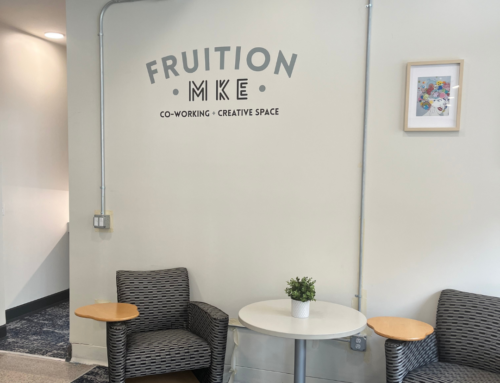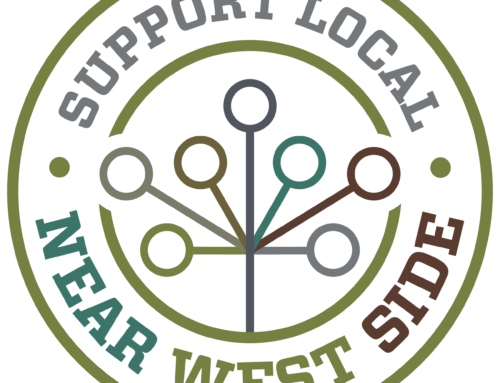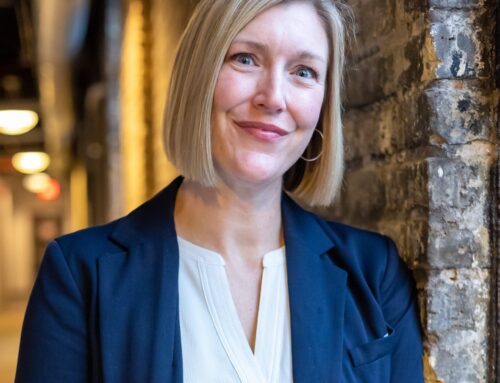By: Anne Marie Gunn
On September 10, 2018, the U.S. Department of Housing and Urban Development (HUD) awarded Marquette University and Near West Side Partners a $1.3 million Choice Neighborhoods Initiative (CNI) grant to create a locally-driven, comprehensive strategy to transform the Near West Side neighborhood into an inclusive community of opportunity where people want to live, work, and play. The grant is focused on the categories of Housing, People and Neighborhood. A diverse group of residents and other stakeholders have been assembled to support the planning process and implementation of short- and long-term community enhancements. In September 2019, the CNI planning team submitted an outline of the Transformation Plan with the preliminary strategies for neighborhood transformation. In March 2019 the team submitted the draft Transformation Plan with updated strategies based on the collaborative work of stakeholders. Over the summer the CNI planning team worked with residents to develop Action Activities, or physical community improvement projects. HUD preliminary approved six of eight of the proposed projects. The team submitted the Transformation Plan along with the final proposal for Action Activities in December 2020. The six projects below were approved by HUD for funding and data for each is displayed. All projects were completed throughout 2021, 2022, and 2023. Below you will find a description of each project completed and some key facts and figures. These projects had a total leverage amount of $4,554,451.21, including support from the City of Milwaukee’s Community Improvement Project Grant, BID #10 Grants, Brew City Match Grants, and private investments.
| Painting the Near West Side
The goal of this project is to beautify the Near West Side commercial corridors by bringing more public art to the neighborhood. Public art installations serve many purposes including improving the facade of businesses, changing perceptions of the community, and showcasing the talent of local artists. Through this mural project, the CNI Planning Team hopes to create a greater sense of place by making connections between the diverse art community of Greater Milwaukee and the Near West Side. Murals were painted on panels leading to greater longevity since individual panels can be replaced over time. Beyond traditional painted murals, two vinyl building wraps were also installed. |
|
| Number of Murals | 8 |
| Number of Artists | 8 |
| Total amount of CNI funding used: | $130,195.00 |
| Storefront Improvement Project
The goal of the Storefront Improvement Program, SIP, was to improve the exterior of commercial properties throughout the Near West Side. Investment in local business is essential to thriving corridors. BID #10 and City of Milwaukee currently have grant programs that provide local businesses with funding to implement signage and facade improvements, however, the need within the community often outweighs the funding available. SIP opened the possibility for Near West Side businesses to engage in large-scale revitalization of their storefront and bring visible change to multiple corridors. Ten grants, with an average of $30,000 were awarded. In early August 2020, Letters of Intent were submitted for eighteen properties represented by twelve property owners interested in being considered for SIP. The property owners then worked with Near West Side architectural firm, Quorum Architects, or an architect of their choice to produce renderings of what the space could become. Property owners sought cost estimates from contractors for the project in order to submit a full application in early September of 2020. A review team, including representatives from BID #10, City of Milwaukee and NWSP, reviewed all applications and narrowed down the proposals to ten properties. The finalists were chosen based on: ● Alignment of the application with the CNI Transformation Plan goals ● Comprehensiveness of the application ● Potential growth as a result of the catalytic project ● Actionable budget and timeline ● Sustainability of the project long term After approval from HUD, these finalists have continued to work with Quorum Architects as well as their selected contractors to bring their proposals to life and, in doing so, have increased the commercial viability of the Near West Side commercial corridors. Of the 10 previously vacant storefronts that were awarded, 8 of them now have tenants. |
|
| Number of Buildings | 10 |
| Number of Building Owners | 6 |
| Number of Commercial Corridors involved | 5 |
| Average amount awarded per building | $30,000.00 |
| Total amount of CNI funding used | $378,000.00 |
| Neighborhood Markers
The Near West Side Neighborhood Marker project’s goal is to acknowledge the distinction and vibrance of the seven Near West Side neighborhoods. The installation of a central marker showcases each neighborhood’s unique history to residents and visitors, but also is a source of unity for all the neighborhoods with the use of common elements across the markers. Three local artist teams created nine renderings of potential markers that were presented to residents for feedback. As a result, the team of Brandon Minga and Andre St. Louis was selected to design the seven markers. Two meetings were held in 2020 for residents to share feedback about the renderings directly with Minga and St. Louis. Based on this feedback and additional information about how residents view their individual neighborhood, the artist team updated designs for the markers. After the CNI Planning Team received confirmation on the project from HUD, feedback from each individual neighborhood was gathered to finalize the seven marker designs, including the brief historical summary of the neighborhood that will be included on the marker, and locations were determined for each of the neighborhoods. Today, all seven markers can be found throughout the seven neighborhoods of the Near West Side. |
|
| Number of Markers | 7 |
| Number of artists | 2 |
| Total amount of CNI funding used | $136,437.00 |
| New State Music Park
The CNI Planning Team proposed that a portion of Action Activities funding support the creation of THE NEW STATE Music Park. As an extension of THE NEW STATE development, THE NEW STATE Music Park, offers the community a unique and intimate open air music experience for people of all ages. The park is well designed to be “built to last” with attractive landscaping, natural drainage, a large stage for music events and practice, a contoured lawn with table seating and a future direct connection to THE NEW STATE restaurant, Dulaney’s, which is planned to open Spring of 2024. West Side Arts Unlimited (WSAU) and THE NEW STATE will honor the history of the State Theater by establishing a creative performance space for young artists and serving as a catalyst for aspiring artists in Milwaukee. THE NEW STATE will provide a space to cultivate a community of artists focused on love, literacy, appreciation and excellence around modern music, production, performance and professional development. After all phases of development are complete THE NEW STATE will include: ● THE NEW STATE Music Park ● Cutting edge production studios ● Retail space for local artists ● A restaurant ● 400+ seat performance venue Programming led by West Side Arts Unlimited, will include instruction and mentoring to help young artists turn their dreams, talents and ambitions into careers and life-long practices. The Music Park is part of phase one of the development of THE NEW STATE project. The music park will provide programming space for WASU to create a following so that by the time the full project is completed residents and local musicians across Milwaukee are enthusiastic about the services being offered. The greenspace has been programmed both formally and informally and gives all the chance to perform or enjoy music. As of December 2022, the Music Park was completed and has hosted several music groups for live performances. |
|
| Total amount of CNI funding used | $116,714.00 |
| Traffic Calming Planters
Reckless driving is consistently a concern of Near West Side residents. The goal of this Action Activity has been to create safer, calmer and more aesthetically pleasing commercial corridors by placing planters in parking lanes at key intersections. The planters have prevented drivers from using the parking lane as a passing lane. North 27th Street is an area of particular concern for reckless driving. With the emergence of new, thriving businesses along this main street, safety and beautification is more important now than ever before. In partnership with the City of Milwaukee and Department of Public Works, the North 27th Street Rapid Implementation Improvement Project began in August 2020. The City of Milwaukee’s initiative builds quick, low-cost street improvements to increase the safety and comfort of people walking, biking and driving, including using paint, colored pavement markings, and flexible posts to create curb extensions. These improvements took place between West Wells Street and West State Street. Since their installation in June of 2021, these planters have served as curb bump-outs, and as a result, “excessive speeding (over 40 miles per hour) decreased 40%, while yielding to pedestrians increased by 23%”, according to The City of Milwaukee. |
|
| Number of intersections | 4 |
| Number of planters | 22 |
| Dimensions of planters | 48” long, 24” wide, and 30” tall |
| Total amount of CNI funding used | $41,405.00 |
| Fat’s Triangle
“Fats” Triangle is a traffic median located at the intersection of North 35th and West State Streets, one block away from the targeted housing site College Court. Named after E. Joe “Fats” Henke of the State Street Advancement Association, “Fats” Triangle has been a Near West Side landmark for many decades. However, years of deferred maintenance left “Fats” Triangle as an eyesore with an ailing pine tree, few flowers and collected litter. The site was identified by residents as in need of positive transformation. While the State Street Advancement Association is no longer in existence, the CNI Planning Team will assume their spirit and honor the work of “Fats” who promoted the advancement of State Street in the mid-1900s by providing aesthetic improvements that are environmentally and pedestrian friendly. Preliminary plans were produced working with neighbors, area businesses, local elected officials and the City of Milwaukee. The CNI Planning Team then worked with local companies, Quorum Architects and Greenfire Construction, to produce the final renderings and construction plans for “Fats” Triangle. In phase one of the redevelopment, the first stages of beautification took place. The decaying pine tree was removed and strategic curb cuts constructed to allow storm water from 35th Street, State Street and Linden Place to be captured within a native bioswale garden. Bioswale gardens are aesthetically pleasing year-round, are a natural habitat for birds and butterflies, and capture stormwater on site to keep the garden refreshed and reduce the amount of stormwater entering adjacent storm sewers. To bring the first phase of the project to fruition, the CNI Planning Team leveraged Early Action Activity dollars with a grant from the Milwaukee Municipal Sewerage District (MMSD). Phase two of redevelopment was moved from beautification to creation of a space that better protects pedestrians and transit riders. The intersection at North 35th and West State Streets is busy with vehicular traffic and an active bus stop for two major bus lines. The sidewalk has been widened by removing a portion of the lawn to create a larger buffer between pedestrians and cars, and a concrete bench has been included in the design to give bus riders a safer and more convenient place to wait for city transportation. Phase two of this revitalizing project was funded by Action Activity dollars with HUD’s approval and was completed in November of 2021. |
|
| Total amount of CNI funding used | $147,249.00 |




